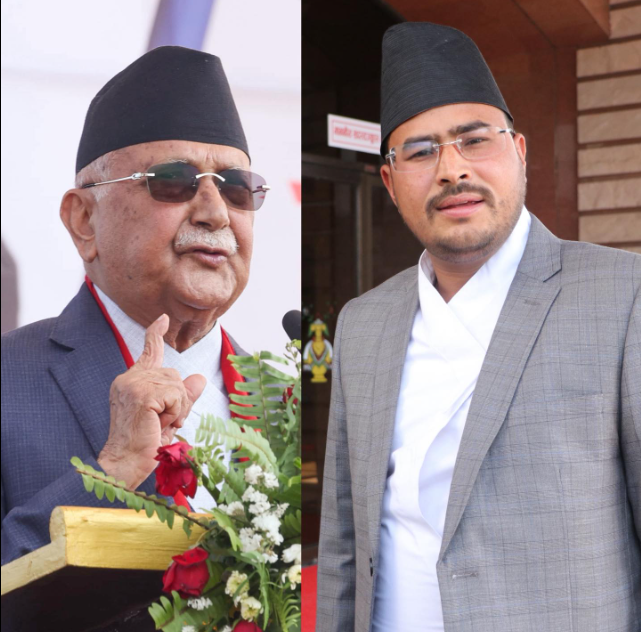A New Debate in Nepal’s Politics
Nepal’s political landscape may be heading toward a major shift. Member of Parliament Gyanendra Shahi has publicly challenged Prime Minister K.P. Sharma Oli, saying that the time has come to elect the country’s Prime Minister directly through the people’s vote not through political deals in Parliament.
This bold statement is sparking discussions across the country about how Nepal’s top leader should be chosen.
Shahi’s Message to Prime Minister Oli
In a strong public statement, Gyanendra Shahi said:
“Nepal no longer needs a Prime Minister selected by Parliament. The people should have the power to choose their leader through direct voting.”
He went one step further by challenging PM Oli directly:
“Wherever Prime Minister Oli decides to run for election, I will stand against him from the same place. If he wins, I will respectfully welcome him with a garland. But the real test is to compete directly in front of the people.”
This statement has gained attention not only because of its boldness, but because it speaks to a common frustration among many Nepalis that leaders are chosen through political games rather than through real public support.
What Does “Directly Elected Executive Prime Minister” Mean?

Right now, Nepal’s Prime Minister is selected by the majority in Parliament. This means that party politics and internal alliances decide who becomes Prime Minister.
Shahi is suggesting a different system — one where the people directly vote for the Prime Minister, just like in countries such as the United States or France. In such systems:
- Voters choose their national leader directly.
- The elected Prime Minister has a stronger mandate from the people.
- The system is more transparent and accountable.
Why This Matters to the People
This proposal is not just about politics — it’s about how democracy works.
Many citizens feel disconnected from the political process. They vote for Members of Parliament, but not for the country’s leader. Decisions often happen behind closed doors.
If Nepal moves toward a system where the Prime Minister is directly elected:
- Citizens will feel more involved in choosing their leader.
- The Prime Minister will be directly answerable to the people, not just to political parties.
- Political backroom deals could decrease, improving trust in government.
Is This Challenge Just Personal?
While Gyanendra Shahi’s challenge to Prime Minister Oli may seem personal, it also highlights a bigger issue in the country a desire for change in how leadership works.
Shahi has presented himself as someone ready to compete directly and fairly. His challenge is not only to PM Oli, but to the current political system as a whole.
Next Chapter in Politics ?
This statement alone will not change Nepal’s system overnight. But it has sparked a new conversation. Many young people and voters are paying attention. Political analysts are also beginning to discuss whether the country needs a constitutional change to allow for direct elections of top leaders.
It will now depend on whether more political leaders support this idea, and whether the people demand such a change in the future.
Wrapping Up !
Gyanendra Shahi’s public challenge to Prime Minister Oli is not just a political stunt. It is a serious call for democratic reform. He wants a future where Nepal’s Prime Minister is chosen directly by the people, not just selected by Parliament.
Whether or not this system becomes reality, the message is clear: Nepali citizens want stronger voices, greater transparency, and leaders who truly represent the people.


 Sunita Dangol Pressures Mayor to Call Meeting Soon
Sunita Dangol Pressures Mayor to Call Meeting Soon  PM Oli Returns from BIMESTIC, Speaks on Tinkune Incident
PM Oli Returns from BIMESTIC, Speaks on Tinkune Incident  PM Oli claims India played the role in pro-monarchy movement
PM Oli claims India played the role in pro-monarchy movement